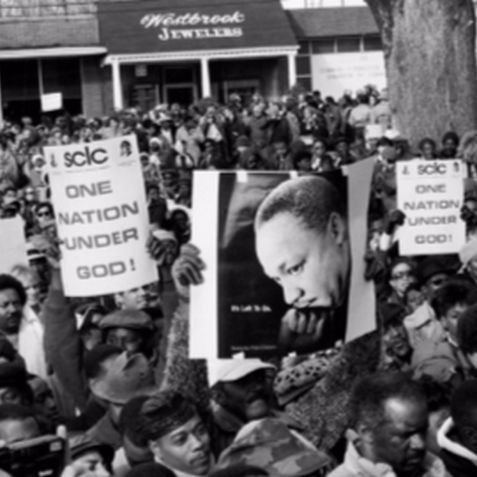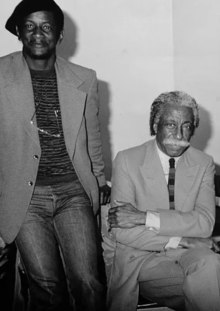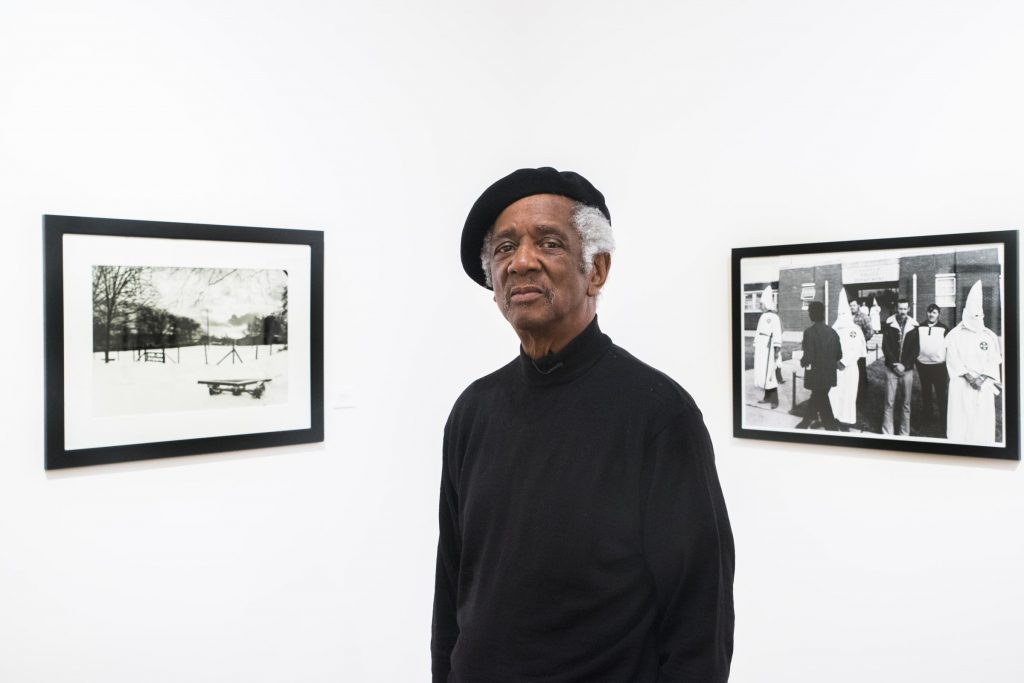
Hey POU Family! It’s the weekend and today is the last day of the weekly theme of African-American photographers.

Jim Alexander (born August 7, 1935) is an American documentary photographer, photojournalist, activist, and teacher who is best known for being a “Participant Observer” and his photographs of human rights and black culture. In 1995, he was the first artist selected in the annual “Master Artist” program conducted by the City of Atlanta Office of Cultural Affairs. He would later be inducted into The HistoryMakers in 2006.
Alexander was born James Alexander on August 7, 1935, in Waldwick, New Jersey as one of 12 children to auto mechanic David Alexander, and Frances James Alexander. He attended Waldwick Public School and Ramsey High School. He grew up during a time where the opportunities for Blacks in America to economically advance were few.

In 1952, Alexander joined the U.S. Navy at the age of 17. During his time in Naval boot camp in Bainbridge, MD, one event would help shape the course of his entire life; Alexander won his first camera, a Kodak “Brownie Hawkeye” in a friendly dice game. Immediately putting his new camera to use, Alexander sold photographs to the other sailors for fifty cents each.
Once he finished boot camp, he was transferred to a naval base in Charleston, S.C. to begin training as a diesel engineman. While in Charleston he asked the naval base photographer to look over some of his work, and he began teaching him about 35mm and large format photography. After leaving the Navy in 1956, Alexander put photography on hold for several years. He managed a pool hall and detailed cars. He lived above the pool hall, which was called a rooming house. The rooms were rented for $9 a week. That room and the tiny bed became Alexander’s home during what he called his “street time.”
In 1964 he moved to Ridgewood, New Jersey from Paterson where he lived following his discharge and launched his professional career as a freelance photographer. Alexander completed courses for a certificate in business organization and management at Rutgers University, while he worked as general manager of a newspaper delivery service. He also enrolled at the New York Institute of Photography (NYIP) and earned a degree in commercial photography in 1968. He later became apart of NYIP Famous Alumni

During the height of the human rights movement, Alexander began documenting the anti-war and civil rights movement, and later the local and national responses to Dr. Martin Luther King, Jr’s assassination in 1968. His photographs included: marches, rallies, conferences, meetings, festivals, concerts, and Black life as a whole. He entitled the body of work Spirits/Martyrs/Heroes and continued to add photographs to the collection over the ensuing years The collection ranges from the 1960s to the present. It encompasses a variety of subjects from the human and civil rights movement, politics, music, art, and everyday individuals who were consistent in their pursuit of equality.
On a bus trip from Ridgewood, New Jersey to New York, Alexander met Eric Maristany. They both were traveling with cameras, so the conversation between the two sparked. Maristany worked at a filmstrip company in Ridgewood and invited Alexander to visit the studio. After visiting the studio a few days later, he met the owner Richard Bruner, and staff of Bruner Productions; producers of educational and civil rights movement filmstrips. He became a volunteer at the studio after gaining respectability as a documentary photographer. Alexander began freelancing at Bruner Productions.
Alexander is also known for his document of Black inspired music, prominently jazz and blues. When he photographed different events, he realized that the event would open with a musical selection. He started to appreciate the influence music had on the African American community, and it revealed the importance of musicians. “I am just a lover of music. There was a lot going on in the ’50s and ’60s, in New Jersey, where all the little clubs or corner bars had a trio or quartet playing. I was really listening to the music.” He then decided he would incorporate black music in his work. In 1988, Alexander curated his own exhibit entitled Blues Legacy for the first National Black Arts Festival.
He curated the Duke and Other Legends: Jazz Photographs by Jim Alexander that same year. The exhibit featured 50 classical jazz musicians that toured 13 southern cities through a grant from the National Endowment for the Arts and the Southern Arts Federation. The resilience and creativity of African American culture captivate the world whether it is through music, art or the written word. Jazz music is just one example of the beauty birthed by African Americans in spite of the hatred and marginalization that was designed to break their spirits. Alexander juxtaposed images of the ugly barriers created by hatred as well as the elegant strength of those who dare to shatter them. He has spent years documenting jazz musicians such as Duke Ellington, Ella Fitzgerald, and Count Basie just to name a few.

Alexander met and became friends with documentary photographer Gordon Parks in 1968. Parks was influential in the direction of his photographic career. “A photo can be taken to build, or it can be taken to destroy, and that decision rests in the hands of the photographer.” Alexander recognized how his photographs could affect the awareness of the subject and the viewer.
Moved to dedicate ten years of his life and work to documenting human rights and the Black experience; he shared this intention with Parks. Parks said, “that sounds good James, but your ass is going to starve; nobody is going to pay you just to run around shooting anything that interests you.” So Alexander decided to teach others the art of photography while shooting documentary work on the side. Parks approved his decision and told him, “That sounds better.” Fifty plus years have surpassed since having that conversation with the late Gordon Parks, and Alexander continues his documentary work.
Alexander believes that each photo contains burrows that sends a message deep into the viewer’s conscious. His photos have the aesthetic of a participant observer. As described by Alexander, “a participant-observer acknowledges the undeniable influence of his mere presence, while pleading allegiance to the role of the spectator.” Alexander’s images help call attention to gross violations of human rights in the United States over the course of many decades.
Alexander has been instrumental in the founding of several organizations of professional photographers, including the Photographers’ Collective, the Atlanta Photographers Group, and Zone Three. He is a founding member and past executive vice chairman of the National Black Media Coalition and completed two terms as president of African Americans for the Arts, (AAFTA). Alexander is also a member of the American Photography Archives Group, (APAG) which is a 501(c)(3) non-profit resource organization for individuals who own or manage a privately held photography archive. Alexander belongs to the National Alliance of Artists from Historically Black Colleges and Universities (NAAHBU) which is an organization founded on May 19, 2000, on Morris Brown College campus in Atlanta, GA. The organization features artists that have taught, studied, or worked in art departments and programs at HBCUs.
